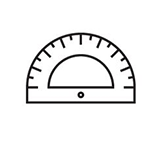오비렙터(Oviraptor)
| 국내/해외배송 | |
|---|---|
| 배송비 방법 | 택배 |
| 배송비 | 4,000원 (50,000원 이상 구매 시 무료) |
| 수량 |
|
| 상품 정보 | 가격 | 삭제 |
|---|---|---|
| [총 상품금액(수량)] 0 (0개) | ||
- 일반명 : 오비렙터
- 학명 Scientific Name : Oviraptor sp.
- 형태 Mode : 골격화석 Skeleton
- 시대 Age : 후기 백악기 Late Cretaceous
- 크기 L×W×H (m) : 2m×0.2m×1m
- 원산지 Location : 내몽고 Neimenggu
OVIRAPTOR("Egg Robber")
ANATOMY
Oviraptor was a small, bird-like, omnivorous dinosaur. It was about 6 to 8 feet long (1.8 to 2.5 m), weighing about 55 to 76 pounds (25 to 35 kg). It was lightly built, fast-moving, long-legged, and bipedal (it walked on two legs). It had a curved, flexible, s-shaped neck, a long tail, short, strong arms, and curved claws on its three-fingered hands and three-toed feet. The claws on its large hands were about 3 inches (8 cm) long. Its fingers were long and grasping.
Its strangely-shaped, parrot-like head had a short, toothless beak and extremely powerful jaws, built for crushing action. Oviraptors had a small, stumpy, horn-like crest on its snout, probably used for a mating display; differences in these crests may represent different oviraptor species or the difference between the male, female, and juvenile of the species.
WHEN OVIRAPTOR LIVED
Oviraptor lived during the late Cretaceous period, about 88-70 million years ago. This was a time of high tectonic activity.
BEHAVIOR, INTELLIGENCE
Oviraptor was a relatively large-brained dinosaur that cared for its eggs.
DIET
Oviraptor was probably an omnivore, which is unusual for dinosaurs. It probably ate meat, eggs, seeds, insects, plants, etc. with its beak and powerful jaws. Oviraptor (meaning "egg stealer") was thought to eat mostly eggs. In 1924, an Oviraptor fossil was found on top of some eggs (which contained no fossilized embryos), and people assumed that it had been eating the eggs. Recently, however, in
LOCOMOTION
Oviraptor walked on two long, slender, bird-like legs. It must have been a fast runner, considering its long legs and light weight. It could perhaps perhaps run about as quickly as an ostrich, which can run up to 43 mph (70 kph).
DISCOVERY OF FOSSILS
Oviraptor was first found in the Gobi desert (in
CLASSIFICATION
Oviraptor belonged to the:
Kingdom Animalia (animals)
Phylum Chordata (having a hollow nerve chord ending in a brain)
Class Archosauria (diapsids with socket-set teeth, etc.)
Order Saurischia - lizard-hipped dinosaurs
Suborder Theropoda - bipedal carnivores
Infraorder Coelurosauria - lightly-built fast-running predators with hollow bones and large brains
Superfamily Maniraptoriformes - advanced coelurosaurs with a fused wrist bone
Family Oviraptoridae - small, bird-like predators with oddly-shaped, beaked, short heads, which included Oviraptor, Conchoraptor, and Ingenia.
Genus Oviraptor
species philoceratops (type species)

















 확대보기 및 상세정보
확대보기 및 상세정보